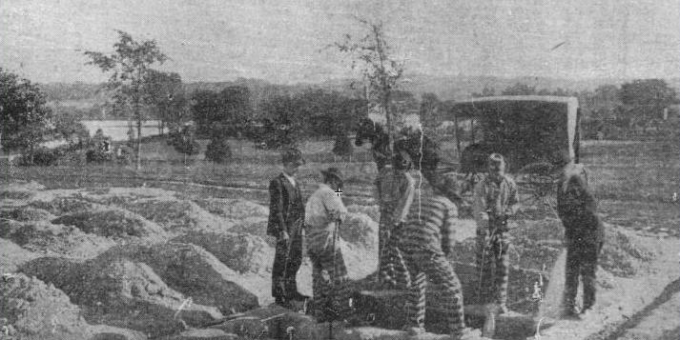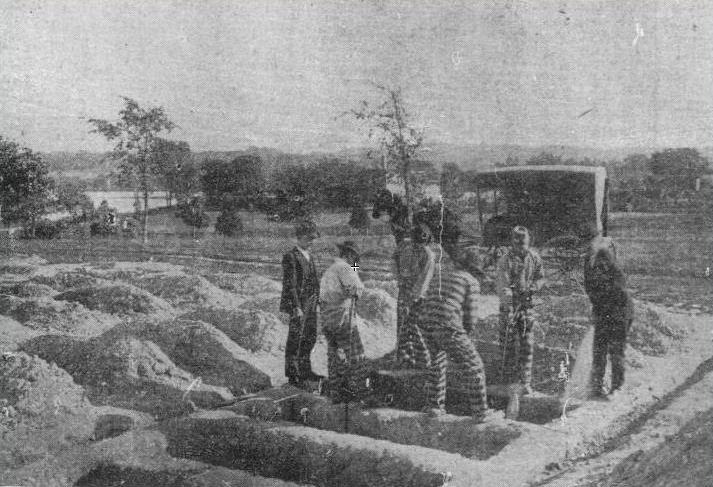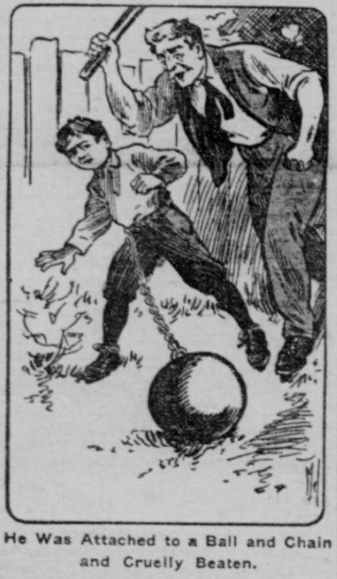
When I see old cartoons showing characters in the classic ball and chain, I am always left wondering how the U.S. used the ball and chain and why didn’t people pick the ball up and walk off with it.
So I spent an hour searching through newspaper archives and here is what I uncovered.
Drank Mescal and Morphed into a Haystack
One night in the El Paso, Texas area, 1900, Mr. Pascal had too much to drink. When it started to rain, he knew he had to stay dry, but instead of going home, he covered himself up in a heap of dried grass and passed out in a gutter.
Before the morning arrived, a police officer went poking around the gutter haystack and uncovered the unconscious Pascal.
By morning, Pascal was dragged in front of a judge and fined one dollar. He was slapped into a ball and chain and sent to City Hall to work off his fine.
Whether or not Pascal was fully recovered from the night before is unknown. What is known is that he was not going to be sticking around to play janitor for the city. So he picked up the ball of iron and walked off.
Later that day, on discovering Pascal’s disappearance, a 75 cent reward was offered for the return of the ball and chain.

Forced Employment
The incident with Pascal was not the first time a city tried to force someone into labor. In the spring of 1893, the police in Norfolk, Virginia were given a warrant to arrest all unemployed people within the city. Those arrested were attached to a ball and chain and sent to work for local farmers, woodsmen, and dredgers.
It was stated in one article that those for whom no employment could be found were to be placed in jail and fed only bread and water until these individuals somehow found work from inside a cell.
State Penitentiaries
Meanwhile, in state prisons throughout much of the South, the ball and chain was used when convicts were sent outside the walls to work. Not surprisingly, quite a few men were prone to pick up the roughly 50 pound ball of iron and walk off.
In 1916, a West Virginia convict with only four months left to serve, was sent to work in the prison’s quarry. When the man realized he wasn’t being watched by any of the guards, he picked up the ball and made a successful escape.

Reform School for Boys
Adults were not the only people being fitted with a ball and chain.
Mr. Charles, the head of a boys’ reform school in Kansas, 1905, felt that the best punishment for disobedient boys was to put the ball and chain to their ankles and lock them in a dark room for a month, or longer.
During the solitary confinement, some of the boys were also given dietary restrictions. For anywhere from 10 to 60 days, the boys in confinement were given only one small meal a day so that the combination of hunger, darkness, and physical confinement would break them.
Girls Put in Ball and Chain
The reform schools for girls also used the ball and chain on their inmates. At a reform school in Nebraska, 1918, girls who threatened to run away were immediately attached to a ball and chain, handcuffed, and then whipped into submission.
Use Ended
It was during the 1950s that the ball and chain fell out of favor in the U.S.. People saw its use as a form of cruel punishment for children, and they began to realize that it hardly prevented adult men from escaping work gangs and community service.

